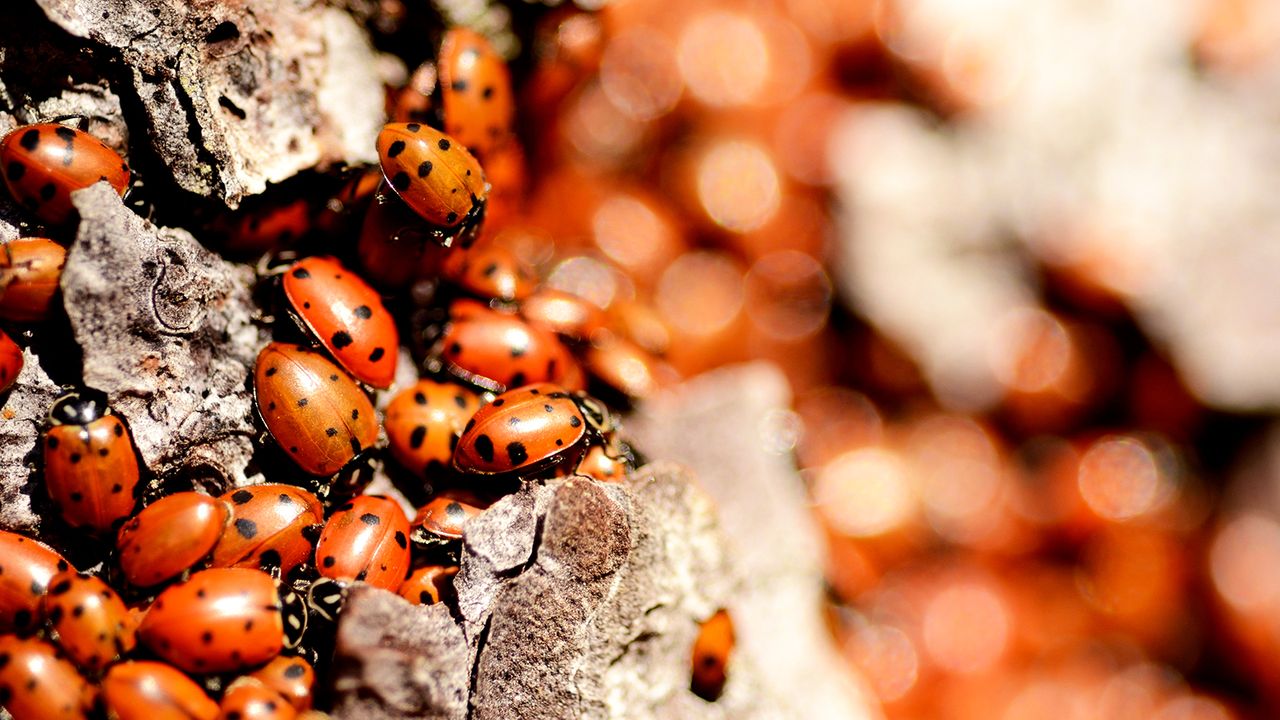
Seeing a ladybug inside your home is hardly cause for concern. These sweet little insects are associated with luck and color, so much so that a group of them is referred to as a "loveliness of ladybugs". But according to experts, we're in the midst of peak ladybug season, and it's important to act now to prevent potential infestations.
While ladybugs are great helpers in the yard, managing numbers of aphids and other bugs, it's important they don't swarm inside your home. “When they come indoors — especially harlequin ladybugs, which often gather in large numbers — they can become a nuisance," says Sophie Thorogood, technical training manager at Pest-Stop.
"Large clusters can stain walls, wallpaper and woodwork with their secretions, though they’re not harmful to humans or pets.”
Here's how she suggests keeping them at bay, humanely.
Why ladybugs are heading indoors

It's been a great year for ladybugs. "This summer’s warm weather has created ideal conditions for insects to thrive," explains Thorgood
“The higher temperatures have boosted populations of all insects, including aphids - one of the ladybug’s main food sources. With plenty to eat, ladybug numbers have naturally risen too.”
However, now we're entering the colder months, it becomes increasingly difficult for ladybugs to survive the harsher conditions.
“As the weather cools, ladybugs prepare to survive the winter by entering a resting state called diapause, which is similar to hibernation,” Thorgood says.
While they will often choose to hibernate in places such as sheltered trees and sheds, your home is also a temptingly warm and safe space for ladybugs to survive the winter. And if ladybugs find a space to settle down, their numbers can grow fast.
Keeping them at bay

Don't be concerned by the occasional ladybug. These insects are not only charming, but also totally benign. And if they're harmed, there's one less insect in your yard to manage other bug populations such as aphids. That's bad news for your roses!
“If they’re gathering in noticeable numbers, it’s best to remove them to prevent them from overwintering indoors,” says Thorgood. "Otherwise, they may re-emerge in spring."
“The most humane approach is to gently relocate them outside,” Thorgood advises. “You can pick them up carefully or use a small piece of paper for them to climb onto before placing them outdoors.
“If you prefer not to touch them, a spider vacuum can safely collect and release them without harm.”
I'll also be working to make sure that my yard offers a safe space for overwintering, which will give these bugs a chance of survival through the winter months. Easy ways to do this can include buying a bug house, to leaving some roughage in your yard to create small habitats for friendly insects and animals.
Follow Tom's Guide on Google News and add us as a preferred source to get our up-to-date news, analysis, and reviews in your feeds. Make sure to click the Follow button!







